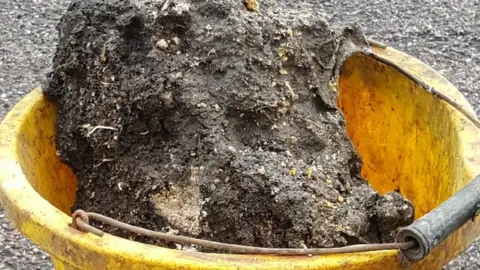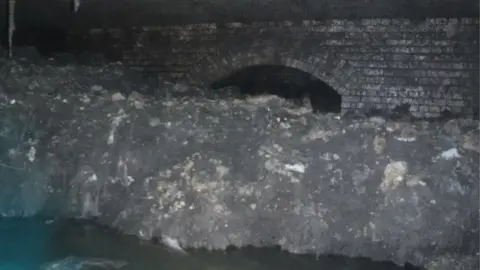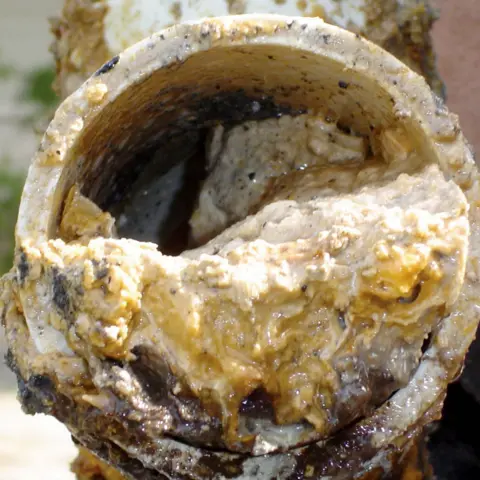Sidmouth fatberg: Work starts to remove 'monster'
The removal of a 210ft (64m) "monster" fatberg which is blocking a sewer in a seaside town has begun.
The congealed mass of fat, oil, wet wipes and other rubbish was discovered in the sewers of Sidmouth in December.
South West Water has removed the first chunk of it and taken 3D scans of the "unwanted Christmas present".
It is estimated it could take eight weeks to remove it by breaking it down with manual labour and sucking it up to the surface.
 South West Water
South West WaterClearance teams are using a combination of pick-axes and high-pressure jets to clear the colossal chunk of congealed fat.
They are wearing full breathing apparatus and body suits because of the dangerous gases released by the fatberg.
High levels of hydrogen sulphide and methane mean the air is also too unstable to risk taking cameras down to film the removal, according to the water provider.
It is an unpleasant job for the teams involved, with workers from the Whitechapel fatberg in London in 2017 describing the smell as "rotting meat mixed with the odour of a smelly toilet".
Once broken down into a manageable consistency, the fat is being sucked up a pipe into tankers waiting on the surface.
It will then be processed at a plant which turns waste into electricity.
 South West Water
South West Water Museum of London
Museum of LondonFatbergs can be prevented by only putting the "three Ps" down your toilet - pee, poo and paper.
Most campaigns by water companies reference the "three Ps" and urge people not to dispose of nappies, condoms and wet wipes this way.
South West Water asked everyone not to "pour fats, oil or grease down the drain, or flush wet-wipes down the loo".
